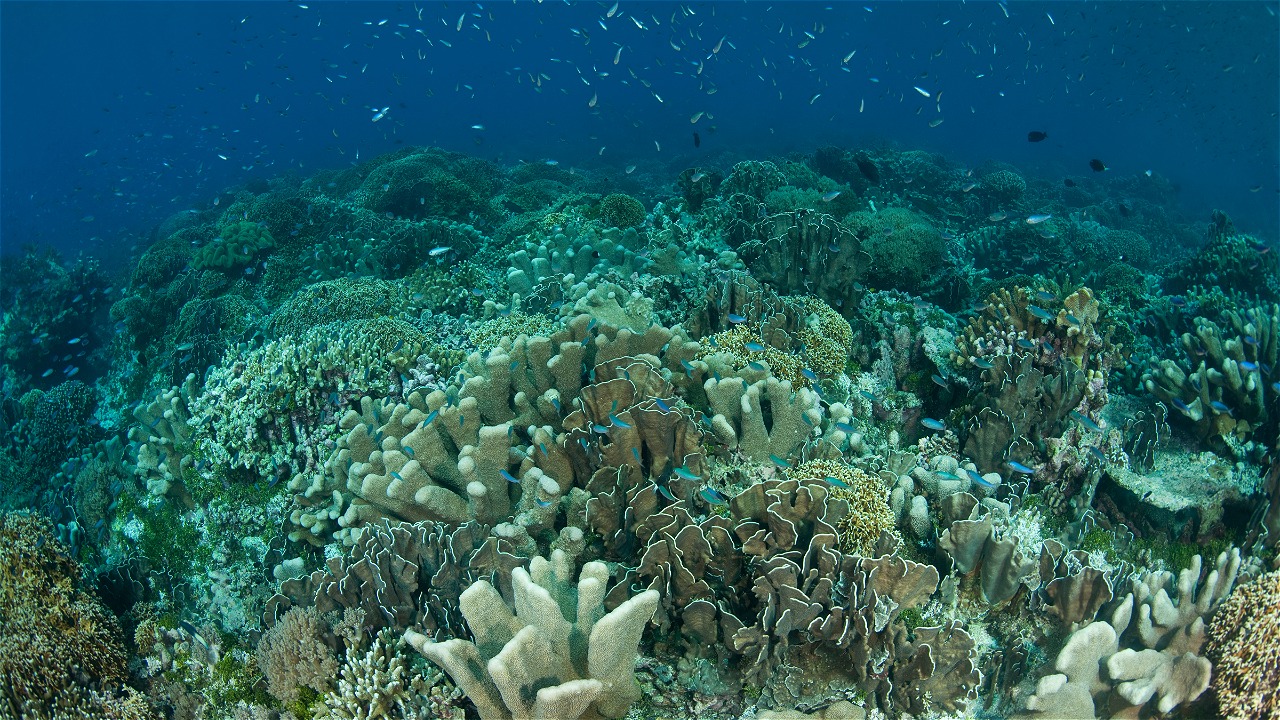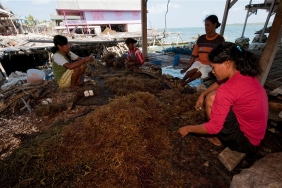CORAL REEF HEALTH MONITORING IN CENDERAWASIH BAY NATIONAL PARK
By: Evi Nurul Ihsan - Monitoring and Surveillance Officer, WWF Indonesia
Last April, WWF Indonesia's Teluk Cenderawasih site conducted coral reef health monitoring together with Bird's Head Seascape (BLKB) partners and the area manager, Balai Besar Taman nasonal Teluk Cenderawasih (BBTNTC). Simply put, coral health monitoring aims to assess management performance within the Teluk Cenderawasih National Park (TNTC), which is managed through a zoning system. Monitoring results can measure how far and how fast reef health and fish populations have improved after the establishment and implementation of the zoning system in the TNTC area in 2009.
Monitoring was carried out at 29 points inside the conservation area while 7 points were outside the area. La hamid as the BBTNTC Pollution Control Officer said that "it is very important to conduct monitoring outside the area, because the condition of coral reef health found outside the area can be used as a benchmark and comparison so that we can see the effectiveness of management within the TNTC area. Whether we have been successful enough or not maximized in carrying out management within the area, especially regarding the management of coral reef ecosystems."
The monitoring team recorded the fish population. Only certain fish were recorded such as "key fisheries species" including the family Lutjanidae (snapper), Serrranidae (grouper) and Hamulidae (thick lip) which are target fish that are the main commodities of fishermen. These fish have economic value both for eating and selling. In addition, there are also "functional fish groups" consisting of the families Acanthuridae (sand skin), Scarini (cockatoo) and Siganidae (baronang). This group of fish functions in the process of coral reef resilience (Coral ressilience). As a group of algae-consuming fish that can provide a lot of new space for corals to grow. The monitoring team also recorded benthic substrate cover such as live hard corals, soft corals, coral fragments, stones, sand and other biota.
Bleaching alert
The past month has seen coral reef researchers and observers panic over warnings of rising temperatures in some parts of Indonesia. Warnings issued by the National Oceanic and Atmospheric Administration (NOAA) show significant increases in sea temperatures. This warning is bad news for coral animals. Too much heat will cause zooxanthellae (one-celled algae that live in coral tissue) to leave the coral colony and cause coral animals to die slowly because they do not get enough food supply which is usually obtained from photosynthesis of zooxanthellae.
Based on the map released by Coral Reef Watch - NOAA some areas of monitoring locations in the TNTC area are at warning and alert level 1 status although in some other areas blank data. Based on the results of rapid surveys conducted during coral reef health monitoring, coral bleaching that occurs in TNTC is in a reasonable and not alarming condition. Only 1 or 2 colonies were found to be bleached at each site.
However, this does not mean that the TNTC area is without threats. Bombing activities within the TNTC area and capture fisheries activities within the core zone are still rampant. Regular and integrated monitoring and supervision is needed by managers and stakeholders who have a common interest in the TNTC area to preserve and maintain the existing natural balance.





